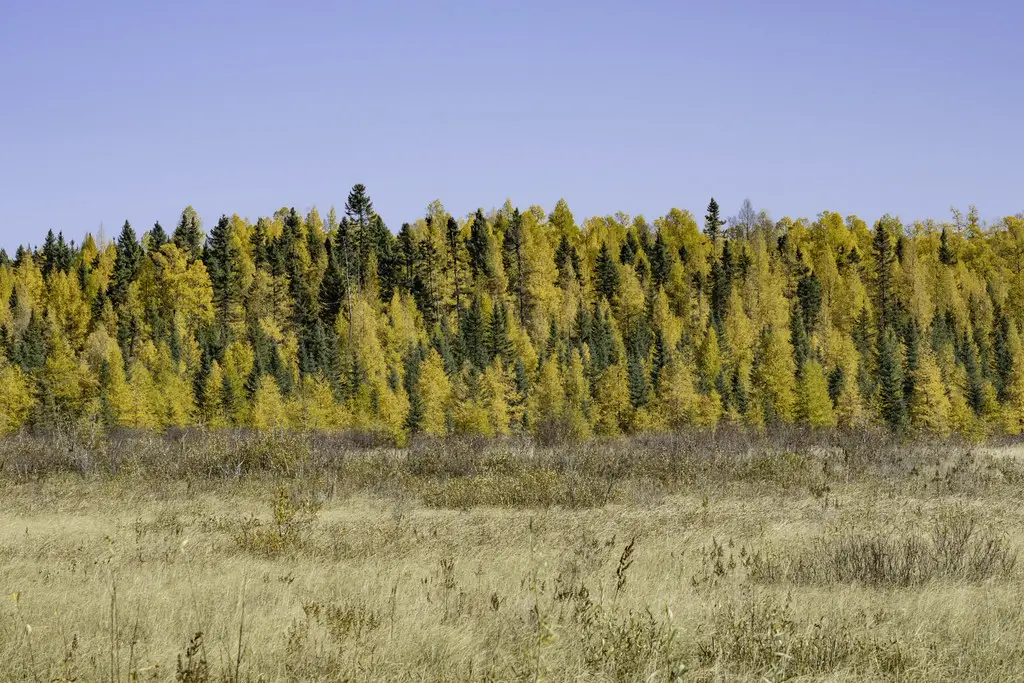The Tamarack tree, or Larix laricina, is a deciduous conifer that grows in the colder regions of North America. Unlike most conifers that maintain their needles year-round, Tamarack sheds its needles in the fall, displaying a brilliant golden hue before doing so. Often found in swamps, bogs, and other wetlands, Tamarack plays a unique ecological role in its native habitat.
Tamarack wood is highly valued for its strength and resistance to rot. Historically, it has been used in boat building, railroad ties, and poles. Tamarack’s medicinal properties have also been recognized by indigenous peoples, who used parts of the tree to treat a variety of ailments.
In addition to its economic and medicinal applications, the Tamarack tree holds a special place in folklore and cultural traditions. Its unique characteristics, such as the ability to thrive in waterlogged soils and its striking autumnal display, have made it a symbol of endurance and transformation in various cultures.
| Common Names | Tamarack, Eastern Larch, American Larch |
|---|---|
| Botanical Name | Larix laricina |
| Family | Pinaceae |
| Plant Type | Deciduous coniferous tree |
| Mature Size | 40 to 80 feet tall |
| Sun Exposure | Full sun |
| Soil Type | Acidic, moist, peaty soils |
| Hardiness Zones | 2 to 5 |
| Native Area | North America, especially Northern U.S. and Canada |
Tamarack Care
Tamarack trees are relatively low-maintenance, thriving in harsh climates and wet, acidic soils. Planting them in full sun and keeping the soil consistently moist will encourage healthy growth. While they are tolerant of poor soil conditions, providing them with well-draining, peaty soil ensures optimal development.
Avoid planting Tamarack in dry or alkaline soils, as they may hinder the tree’s growth and cause stress. Regular monitoring for pests and diseases, along with proper pruning, will keep the tree healthy and resilient.
Light Requirement for Tamarack
Tamarack thrives in full sun, requiring at least 6 hours of direct sunlight every day. Planting it in a location with ample sunlight ensures strong growth and enhances its needle coloration.
Soil Requirements for Tamarack
Tamarack prefers acidic, moist, and peaty soils. It can adapt to waterlogged soils but struggles in dry or alkaline conditions. Adding organic matter can improve soil quality and promote root development.
Water Requirements for Tamarack
Regular and deep watering is essential for Tamarack, especially during the early growth stages. Mature trees are relatively adaptable to varying moisture levels but prefer consistently moist soil.
Temperature and Humidity
Tamarack is well-suited to cold climates and can tolerate temperatures well below freezing. It thrives in hardiness zones 2 to 5 and is adaptable to varying humidity levels, reflecting its native habitat.
Fertilizer
Tamarack generally does not require heavy fertilization. However, applying a balanced slow-release fertilizer in early spring can support growth. Avoid excessive nitrogen, which can lead to weak growth.
Pruning Tamarack
Pruning Tamarack should be done in late winter or early spring before new growth begins. Remove dead, damaged, or crossing branches to maintain the tree’s health and appearance. Avoid heavy pruning, as it may stress the tree.
Propagating Tamarack
Propagation of Tamarack is usually done through seeds. Cuttings can be used but are more challenging to root. Grafting is another method, often used in commercial nurseries.
How To Grow Tamarack From Seed
Growing Tamarack from seed requires stratification or chilling to break dormancy. Sow the seeds in acidic, well-drained soil and cover lightly. Maintain consistent moisture during germination and transplant the seedlings when manageable.
Common Pests & Plant Diseases
Sawflies
Sawflies can defoliate the tree but are usually controlled with natural predators or insecticides.
Fungal Diseases
Fungal diseases like needle rust may occur, especially in wet conditions. Proper spacing and pruning can prevent these problems.
Common Problems With Tamarack
Poor Drainage
Poor drainage can lead to root rot. Ensure the planting site has good drainage or that the soil stays consistently moist.
Nutrient Deficiency
Yellowing needles may indicate a nutrient deficiency. Regular soil tests and proper fertilization can rectify this problem.
Drought Stress
Tamarack struggles in dry conditions. Consistent watering during dry spells can prevent this issue.
Pro Tips
- Plant Tamarack in a sunny location with acidic, moist soil.
- Regular inspection and timely pruning can prevent many common problems.
- Provide deep watering, especially during dry spells.
- Consider Tamarack’s mature size and water needs when selecting the planting location.
- Appreciate the unique deciduous nature of Tamarack and its beautiful fall display.




